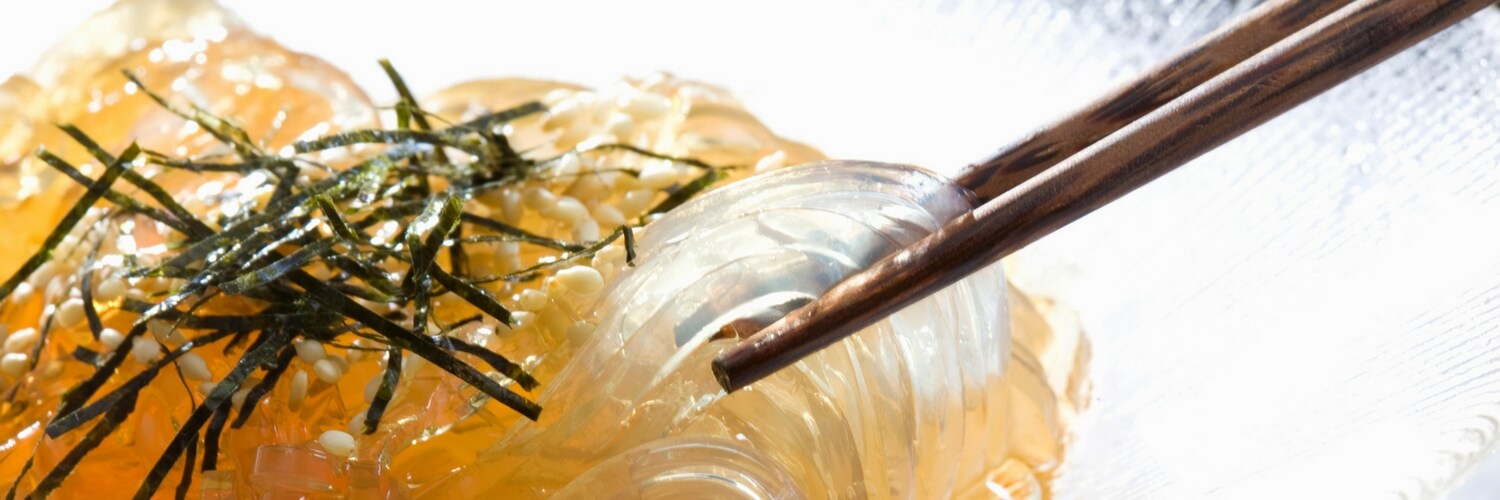
Most fans of Japanese cuisine are familiar with ramen noodles, but they might not realize that Japanese cuisine has many more flavors, textures and noodle shapes worth trying.
Every cuisine embraces some style of noodles in their culture. The Italians have shorter pasta styles like orecchiette and penne designed to trap meat and vegetables. Longer Chinese lo mein noodles are thick and chewy, designed to withstand the high heat of wok searing.
Japan is also no stranger to noodles used in both cold and hot dishes, particularly as a way to celebrate the changing seasons. If you’re only familiar with slurping ramen noodles, our guide to Japanese noodles will help you identify different tastes, textures and dishes you can test out the next time you’re in the massive Asian noodle aisle.
Udon
You will recognize udon noodles as soon as you see them in the market – thick, rope-like noodles typically white or light tan and packaged in see-through material. You can buy udon fresh, refrigerated or frozen, with the length of the noodles around 8-12 inches. Udon noodles are truly the dense, chewy stars of any dish they anchor.
People use these wheat-based umami-bombs in hot soups, where the broth is secondary to the delicious, thick noodles that lurk under the surface and soak up the liquid’s flavor. Nabeyaki Udon is a traditional hot pot dish served in individual clay pots, topped with chicken, fish cake, vegetables and an egg. Perfect for a filling, cozy winter meal!
Somen
If you picture the opposite of udon, you’ll get what somen noodles look like. These thin and delicate strands of wheat flour noodles feature in both hot and cold dishes. They create an elegant, light and airy presentation. People find somen noodles especially refreshing in the summer. Eating them cold and dipped in ginger-laced soy sauce that adds a salty, piquant flavor dimension.
Hiyamugi
Similar in size and texture to somen, hiyamugi is whole wheat noodles. One of the key differences is in diameter (hiyamugi is slightly thicker) and in color (vegetable dyes are often used to color hiyamugi). These noodles are also delicate enough to serve in cold dishes with side dipping sauces. What’s more, they make an eye-catching presentation when dyed with pink or green hues.
Tokoroten
Those with gluten-free diets can rejoice! The primary ingredient in tokoroten noodles is seaweed, which differs from its wheat-laden noodle buddies. This ingredient change also means that the texture of the noodle is chewier and slipperier. If you don’t care for seafood, fear not. This healthy, wheat-free alternative does not have an oceanic taste, and it is also used in cold noodle dishes for its unique texture.
Harusame
Also known as glass or cellophane noodles, harusame are made from starches such as yams or potatoes. Their thin, semi-transparent texture stands up well to soups and sauces, in both hot and cold dishes. Try harusame noodle soup as a Japanese alternative to the cold-virus-soothing chicken noodle soup when you’re feeling under the weather.
Soba
These buckwheat noodles are about the same size and shape as spaghetti. They add a strong, nutty flavor to dishes, and can be used in both hot and cold dishes. Soba noodles hold their texture well in soups and stir fry dishes, and add healthy protein without any fat or cholesterol to a dish.
Half the fun of browsing the Asian noodle section is imagining how they would taste. When you head off to the market, know that the noodles are often in groups, first by region, and then by thickness. Now that you have some knowledge of common Japanese noodles and their uses, go forth and shop with confidence!
